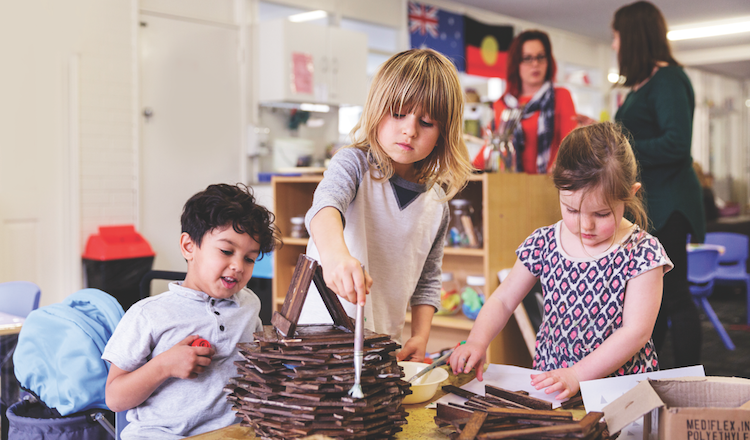Children are master thinkers. They are naturally inclined to observe, explore and make meaning of their surroundings.
Gabby Holden, head of Early Learning at Uniting, says their goal is to inspire children to be creative and curious. She adds: “In order to provide children with the best possible start in life, we equip them with the resources to learn more about their environment and make valued decisions within their community.” Here are her top ten tips:
- Create a resource abundant environment
Provide a selection of simple, open-ended materials that can be used in new and varied ways, to experiment, express thoughts, ideas and emotions. For example, a scarf can be used in pretend play to wrap a doll, transform to a superhero cape or be swirled rhythmically to music. Or building blocks can be transformed into castles, used as counting tools or be colour coded to represent a child’s most loved shades.
- Build connections between children and their encounters
Provide a variety of play and life experiences that engage them actively in exploring the world and those around them. Involve children in their community, celebrating the diversity of human experience, languages and cultures. It could be a Chinese New Year inspired arts activity, or a special bush tucker banquet to celebrate the heritage of those within the community.
- Foster curiosity and invention
Expose children to the visual arts, drama, music, literature, nature, science and technology through visits to libraries, art galleries, museums, parks, beaches and the bush as inspiration to appreciate all the world has to offer.
- Share in the learning
Make time for children to learn with and from others. Become an involved co-learner, showing delight and wonder in the things that interest them. Extend and journey with them as they enquire. You may learn from them more than you teach. It could be exploring the reserve near your home and finding six different kinds of leaves. Share in the joy of children discovering something new.
- Invite to imagine
Give children unhurried time to contemplate and freely choose unstructured activities. Introduce a new concept or experience like playing in a sandpit as an invitation to explore, a puzzle to investigate or a question to consider, predict and discover answers.
- Encourage self-expression
Give children opportunities to represent their ideas and feelings, become absorbed in storytelling, take on the perspectives of others in role play and express themselves through movement and music, using their senses and connecting with nature.
- Focus on the process
Emphasise the creative process and expression of ideas. This could be exploring a range of resources and using them in varied ways that do not require a pre-determined product, like creating patterns in the sand or with an array of natural materials.
- Offer encouragement
Resist the temptation to draw, build or model for a child as this can prevent children’s inventiveness and satisfaction from fashioning something themselves. Provide children with the confidence to experiment. Offer praise when they do so. It could be something as simple as giving a child a ball and observing how they interact with it individually and socially.
- Have sustained conversations
Share their enjoyment and create an environment where children can give their observations. Model how to be inquiring and avoid rushing in with the answer. Join them in their expedition to find out the ‘what’, ‘why’ and ‘how’. This helps them become deep thinkers who are constantly wanting to learn more about the world around them.
- Invite intellectual risk taking
Access to information is easily gained in the digital age. It is important to be able to be selective, discern the facts and know when and how to use it. Encourage children to find connections, challenge and be reflective. Help them become original thinkers who learn how to think not just what to think.
The Carousel would like to thank Gabby Holden, head of Early Learning at Uniting for this article.









